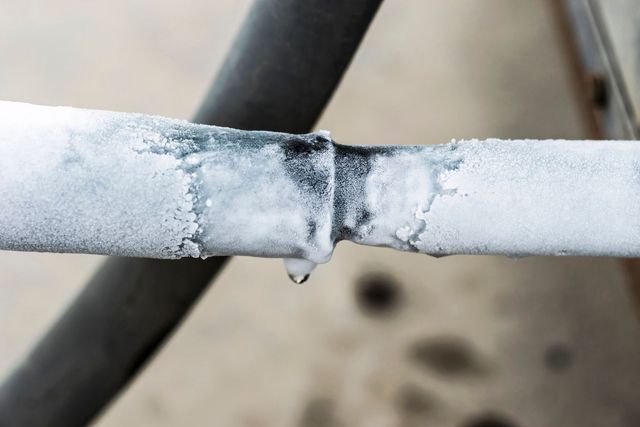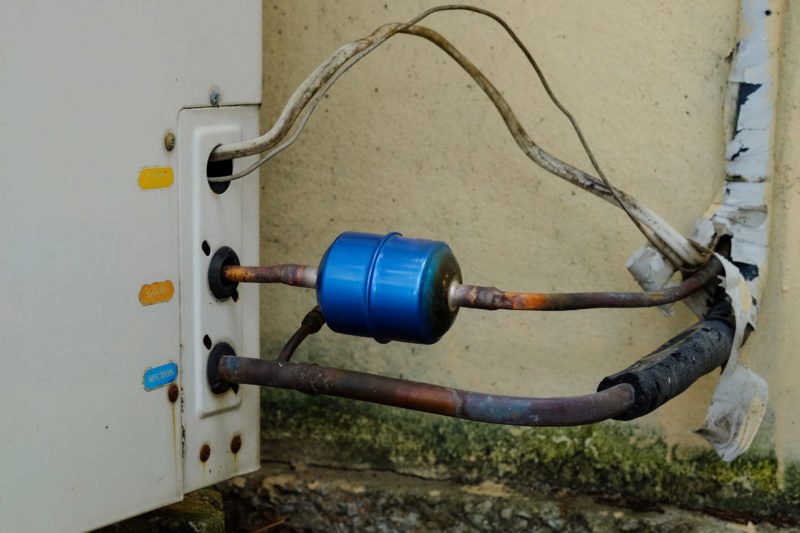Here down the page you'll find lots of first-rate insights around Have a Frozen AC Line? Here’s How to Fix It.

Introduction
Discovering that your a/c pipeline is iced up can be worrying, specifically throughout warm summer season when you count on your air conditioning system one of the most. Comprehending what to do in such a circumstance is critical to stop additional damage to your cooling system and guarantee your comfort indoors.
Understanding the Causes
Numerous elements can contribute to the freezing of an a/c pipe. Recognizing these reasons can help you attend to the issue properly.
Lack of Airflow
One typical source of an icy AC pipe is inadequate air movement. When the air movement over the evaporator coil is limited, it can trigger the coil to go down below freezing temperature, causing ice development on the pipeline.
Reduced Refrigerant Levels
Not enough refrigerant levels in your air conditioning system can likewise cause a frozen pipe. Low refrigerant degrees can trigger the pressure in the system to go down, bring about the freezing of moisture on the evaporator coil.
Winter Conditions
In chillier environments, freezing temperature levels outside can contribute to the cold of air conditioning pipelines. If your air conditioner system is not properly protected or if there are leaks in the ductwork, chilly air can penetrate the system, causing the pipeline to ice up.
Dirty Air Filters
Unclean or clogged air filters can restrict air movement in your AC system, causing numerous issues, including a frozen pipeline. It's necessary to change or cleanse your air filterings system frequently to make sure proper air movement and avoid ice build-up.
Indications of a Frozen Air Conditioner Pipe
Identifying the signs of an icy AC pipe is critical for timely activity.
Reduced Airflow
If you discover a substantial decrease in airflow from your vents, it can show an icy pipe.
Ice Buildup on the Pipe
Noticeable ice buildup on the cooling agent line or the evaporator coil is a clear indication of an icy AC pipeline.
Unusual Sounds from the Unit
Unusual noises, such as hissing or gurgling, coming from your air conditioner system can signify that there's ice present on the pipeline.
Immediate Actions to Take
When faced with an icy AC pipeline, it's important to act quickly to avoid more damage to your air conditioning system.
Switching off the air conditioning
The primary step is to turn off your ac system to avoid the system from running and aggravating the issue.
Checking for Blockages
Examine the area around the indoor system for any kind of blockages that might be obstructing air movement, such as furnishings or drapes.
Defrosting the Pipe
You can make use of mild methods like placing towels taken in warm water around the icy pipe to aid thaw it slowly.
Safety nets
Taking preventive measures can aid avoid future events of a frozen air conditioner pipe.
Routine Maintenance Checks
Set up regular upkeep consult an expert HVAC professional to guarantee that your a/c system is running successfully.
Altering Air Filters
Regularly replace or clean your air filters to avoid air flow constraints and keep optimum efficiency.
Insulating Exposed Pipes
If your a/c pipelines are revealed to cool temperatures, take into consideration shielding them to stop cold throughout cold weather.
Looking For Professional Help
If DIY methods stop working to fix the issue or if you're unsure about exactly how to proceed, it's ideal to look for support from a qualified HVAC technician.
When DIY Methods Fail
If your efforts to thaw the pipe or address other concerns are unsuccessful, it's time to hire an expert.
Importance of Hiring a Professional HVAC Technician
A qualified HVAC specialist has the knowledge and devices required to detect and repair concerns with your air conditioning system safely and successfully.
Conclusion
Taking care of an icy air conditioning pipeline can be an aggravating experience, however recognizing how to respond can help reduce damages and recover comfort to your home. By understanding the causes, identifying the indicators, and taking prompt action, you can efficiently attend to the issue and prevent future occurrences.
What to Do If Your AC Line Is Frozen
Make Sure All Supply and Return Air Vents Are Open
If you notice problems with airflow, the first thing you should do is check your supply and return vents. Supply vents distribute clean, conditioned air throughout your home. As this air becomes stale, it’s pulled into the return vent, where it’s reconditioned before being sent back out through the supply vent.
When these vents are closed, air won’t flow in the home. Before examining your AC, check the vents in every room and ensure they’re all open.
Check for a Dirty Air Filter
Another possible cause of limited airflow is a dirty air filter. Your air conditioner’s filters catch elements you don’t want to breathe in, such as dirt and dust. Over time, filters can become clogged, ultimately blocking air from flowing in and out. The lack of airflow can then cause the entire coil to freeze and will completely restrict any air from moving through it. The AC may need to be powered off for one to two days to allow the coil to thaw after replacing the filter to allow proper functioning of the unit. This debris can also accumulate on your AC’s evaporator coil, requiring a more serious repair. In general, air filters should be cleaned regularly (about every two weeks).
Assess Your Outdoor Unit
In addition to checking your AC, assessing the outdoor unit is a good idea. Also known as the condensing unit, it works with your interior unit to release heat outside. An issue with the outdoor unit can result in rising internal temperatures.
Overgrown Shrubs or Clogged Leaves
From leaves and twigs to shrubs and debris, there’s no shortage of outdoor elements that can accumulate around your condensing unit. When these elements get lodged inside the unit, they can block airflow. Fortunately, removing the blockage can solve the problem.
Sounds of a Broken Fan
Shrubs and leaves aren’t the only things that can impede your outdoor unit’s airflow. If the fan is broken, the unit won’t be able to properly get rid of heat — which means the internal temperature won’t go down. First, make sure the fan is spinning. If it is, check for the following sounds of a broken fan:
- Buzzing
- Rattling
- Screeching
- Hissing
- Clicking
Preventative Measures
Nobody wants to deal with a frozen AC line. In addition to causing problems with your air conditioner, they require professional repairs. On the bright side, there are preventative measures you can take to help ensure this issue doesn’t arise in the first place.
https://www.coopergreenteam.com/blog/what-to-do-if-ac-line-frozen

As a passionate person who reads on Air Conditioner Frozen? How To Fix your Frozen AC Line, I was thinking sharing that excerpt was really helpful. Loved our write up? Please share it. Help someone else locate it. Thanks a lot for your time. Visit us again soon.
Free Estimates
Comments on “Tips for Thawing a Frozen AC Pipe - Restoring Normal Functionality”